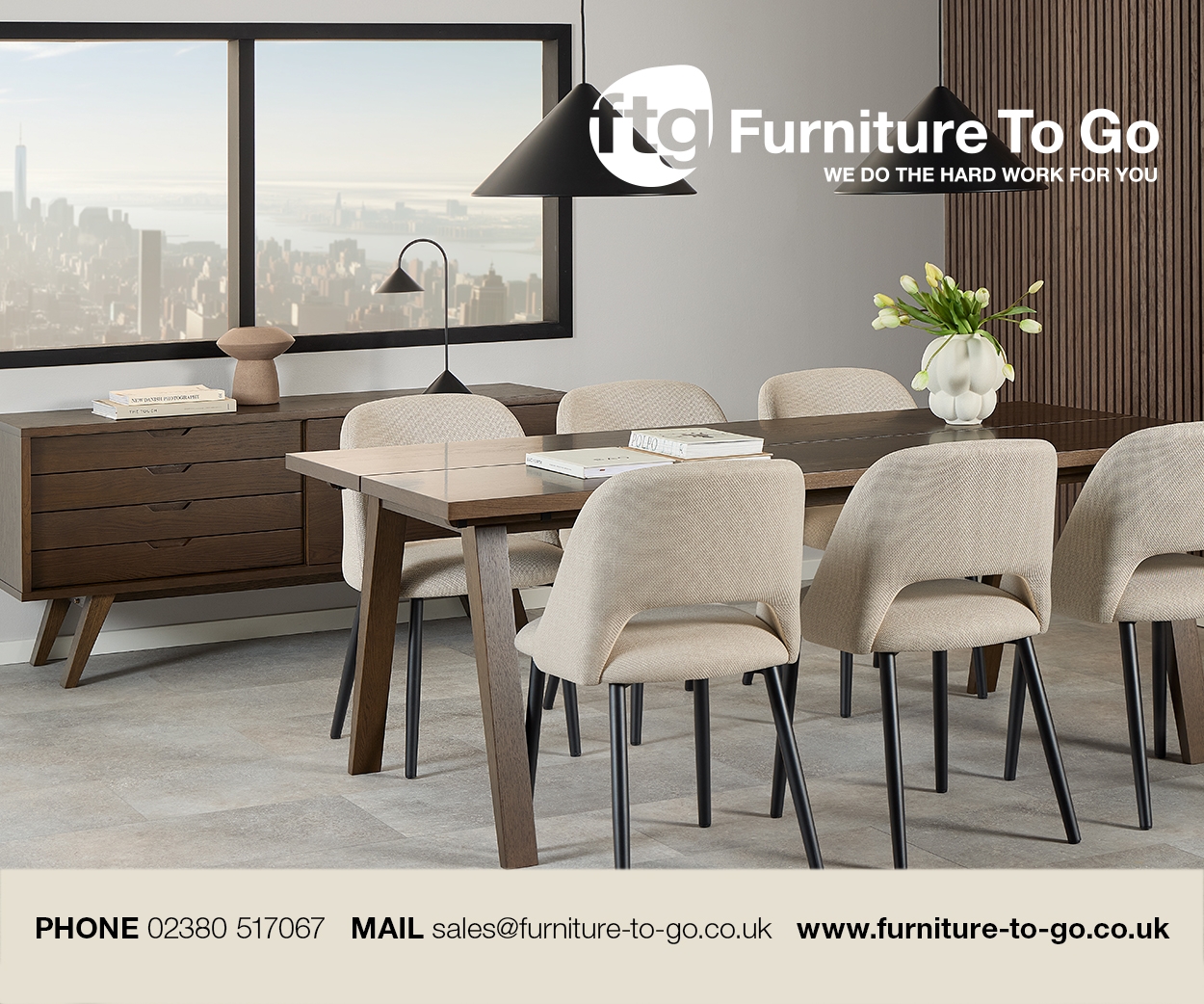There are numerous reasons furniture retailers should upgrade their IT systems, writes Iconography's Wayne Robbins – just read about some of the problems his clients experience on a day-to-day basis, and why unified commerce might be the answer …
Can you spot the odd one out here? Public phone boxes, fax machines, VHS video recorders, and the majority of retail management software used by independent furniture retailers.
You’re absolutely right – it is the ‘majority of retail management software used by independent furniture retailers’, as unlike the others – things which are remembered fondly but essentially obsolete, overtaken by better products and ways of doing things – many furniture retailers still struggle on with old retail software.
Plenty of independent furniture retailers are running their businesses on software which doesn’t really cut it today, especially if they are serious about a web-first approach, growth and being relevant to modern customers.
The reason much of the retail software is somewhat ‘sub-optimal’ is simply that so much of it was conceived of and written for retail as it was, and falls short in coping with retail as it now is.
This software was written for retail as it used to be, when it was arguably easier and more predictable – before consumers adopted online research and shopping. Retail before consumers' horizons broadened, and their choices and expectations grew exponentially.
The fundamental weakness of legacy software used in furniture retail is it is often heavily reliant on integrations with a retailer’s website. This reliance hampers retailers, especially those serious about ecommerce and omnichannel success – integrations can be high maintenance, and create many day-to-day issues, limitations and operational inefficiencies.
Going back 12 years or so, integrating your offline retail management system with your ecommerce website was ‘state of the art’. We have worked with plenty of furniture retailers, and have integrated our ecommerce websites with all the established software vendors in the furniture sector.
This approach was fit for purpose, then – the store was key, the local market easy enough to reach via ads in the paper/radio, and the website often a secondary consideration, its real potential and purpose not fully realised at this point.
Integrations, and the issues that stem from them, were accepted as this was where technology was – ecommerce was still in its infancy. It was great that your basic product catalogue, sitting on the retail management system, could be pushed through to a website, with a category tag, simple description, price, and possibly a reasonable image – without too much hassle, too much duplication of effort, it was a solution. You were a online retailer (sort of). Job done.
Successful retailers now take their website much more seriously – it should be a regional or national sales platform, a driver of footfall to physical stores, setting expectations in the minds of potential customers about your business and the products they will see if they decide to visit you in-store.
Today, a website is a brand builder, it could work in tandem with stores and be a provider of value-added customer services such as offering click and collect, quote in-store with purchasing online later, facilitate in-store purchases paid by instalment online, personalisation, and so on and so forth.
Working with a number of progressive furniture retailers, Iconography has launched a new unified commerce software platform – OMNIS. The platform provides ecommerce, EPoS, CRM and a suite of retail management software that work in unison – a single coherent entity, which does not require integrations between online and offline retail systems to achieve everyday retail outcomes such as reporting, product catalogue creation, purchase order creation and sales order processing. The game has now changed.
Removing integrations creates so many benefits for retailers.
Unified commerce delivers agile and progressive retail for the 2020s, and consigns to the dustbin of history all the day-to-day integration-related issues and limitations that we know many furniture retailers experience when using legacy retail software for online and in-store retailing.
Here are snippets of some real integration issues from our clients' support portal – to highlight the sort of integration issues which hamper furniture retailers and hold them back (we have removed client and software vendor references):
"It has pulled through to X software even though no payment was taken and there is no delivery charge when there should be."
"We desperately need to be able to automatically tell X software that we have delivered a number of orders. Is it possible to import a CSV file into the CMS, with web order number and tracking that then confirms that order as delivered in the CMS? Can this then be passed to X software as part of an end-of-day process so that X software gets delivery confirmed, with tracking ID? See file attached."
"The lead times on merged products is not pulling through and is only taking the lead time for one of the products in the merge. I have used the Y chair as an example. I would need the different colours for the chairs to pull through as they all have different lead times."
"Just realised we have a separate function in place to send in-store payment directly to X software, however it is X software that is rejecting the order, with the following message being returned – 'Sales order number - 432942 Delivered'."
"I enabled new ranges yesterday afternoon, I notice the feed has updated twice since I enabled these ranges and yet they still haven't come through to the website. I will upload screenshots of the ranges from X software so you know what names to look out for."
"We have a couple of items that for some reason are showing the out-of -stock lead times on the product page (and also on overlays), but they have free stock in both X software and CMS."
"I have come in this morning and all the main categories and sub categories have been disabled, please can someone re-enable them asap? And explain why this has happened?"
"Orders have stopped coming down to X software from our website. You will need to contact X company as to why they are not downloading. I've attached the XML for each order to this ticket if that's useful."
"We have managed to set up the branch through X software, but the only issue we have now is that the payment option through click and collect is set to pay by phone only. Obviously, we would like the option of pay by card as well. Y company told us that this is something that would have to be done by Iconography."
"Can you check from your end if we have the same issue as earlier in this ticket? It's just we uploaded a lot of items yesterday that haven't reached the web. I've noticed X software automatically patched last night and am wondering if the patch has affected the file sent to the web?"
The above is a miscellaneous selection of support tickets. These snapshots point to the day-to-day difficulties that fragmented and disjointed systems present to furniture retailers. These things add up, they equate to delay, customer disappointment, reduced time to focus on more productive activity, reduced team morale and higher operational costs– you may need more staff, more user licences, more support and so forth.
The benefits of unified commerce are numerous.
Better insight (and indeed, oversight) across the business. Data is there in real-time – no lags, no re-keying, no moving of files to collate data from different systems.
See what is going on in terms of sales performance and reporting. Effectively manage product catalogue creation/changes in one place. And readily establish accurate product inventory, stock levels, stock availability, lead times, deliveries, locations and movements.
A unified approach enables informed decisionmaking on purchase orders, promotions and tailored customer level marketing.
It means increased operational efficiency. Working with accurate real-time data, available in one place, means you and your team can do more.
It means a better customer experience. Unified commerce provides a single view of the customer – facilitating click and collect, buy in-store and have items delivered, get a quote in-store which can be accepted online, return online orders to store, reward loyalty for online and in-store purchases, and empower store staff to respond to customers' queries in-store with product, stock and inventory information.
It also means reduced training and licencing costs. A modern unified system, purpose-built for the demands of modern retailing, offers a suite of essential retail functionality on a single platform – no need to stitch together sub-optimal solutions from different vendors.
Wayne Robbins is a director at Iconography, which blends high-quality website design with some of the best web programming experience in the market, and has been building profitable, high-performing ecommerce and omnichannel businesses for its clients since 1997. Iconography's integration-free solution, OMNIS, is a unified commerce platform which blends ecommerce, RMS, CRM and EPoS to free retailers of the constraints of their existing platforms.








